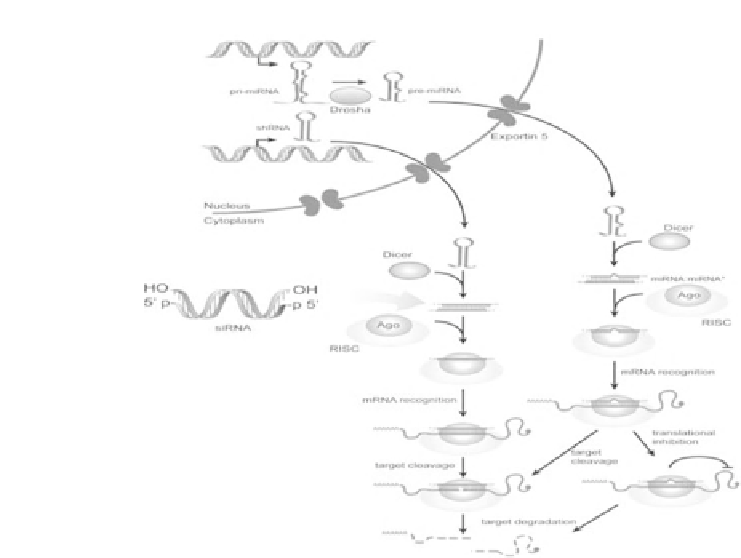Biomedical Engineering Reference
In-Depth Information
Figure. 6.1
RNAi-mediated gene silencing. RNA interference (RNAi) is
a highly conserved regulatory mechanism of post-transcriptional gene
silencing that uses small double-stranded RNA (dsRNA) molecules,
principally siRNAs and miRNAs, to control gene expression. Micro RNAs
(miRNAs) are encoded from highly structured, RNA polymerase II-derived
transcripts, which are processed through the sequential cleavages by
the RNase III-family members, Drosha and Dicer. In the nucleus, Drosha
recognizes and cleaves specific structural elements of the miRNA-containing
hairpin releasing an ~70-nt stem loop, the precursor (pre)-miRNA. The
pre-miRNA is translocated to the cytoplasm by Exportin 5 where upon it
is cleaved into the transiently double stranded miRNA:miRNA* duplex. The
mature miRNA strand associates with Argonaute (Ago), the key component
of the RNA-induced silencing complex (RISC), to direct the translational
inhibition and/or degradation of the target mRNAs to which they bear
partial complementarity. SiRNAs can be either directly transfected into the
target cells or can be derived from short hairpin RNAs expressed from DNA-
based vectors and cleaved by Dicer into the active siRNA. The guide strand
of the siRNA is taken up by Ago2 into RISC. The siRNA guides RISC to the
complementary site on the target mRNA, which engages the endonucleolytic
activity of Ago2, resulting in mRNA cleavage.
One of the biggest challenges facing the
in vivo
application of
RNAi-based silencing technologies is the delivery of siRNAs to the















Search WWH ::

Custom Search